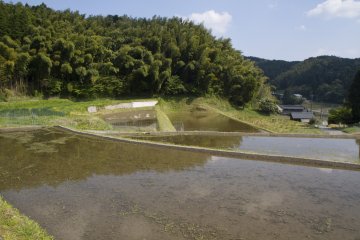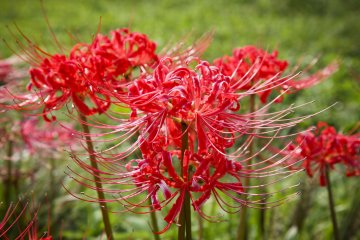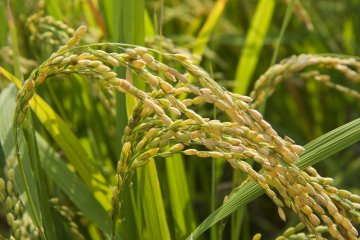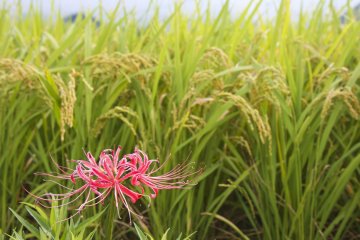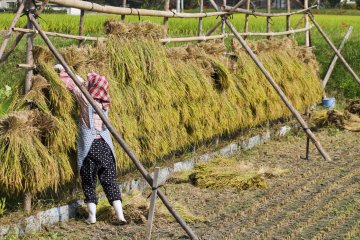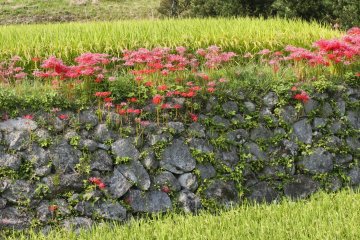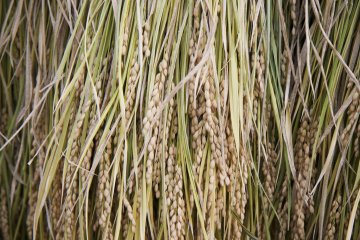In Japan, anywhere is a good place to go during the autumn harvest. Along the way to your destination you are bound to see rice fields. As the rice plants begin to turn from green to yellow and brown, hitherto unseen higanbana, the “higan flower,” suddenly appear along the edges of the fields. Known as spider lilies or hurricane lilies in English, most are bright red, but some are red and white, and you may even come across rare colors, such as yellow or white.
Higan refers to “the other shore” in Japanese, in contrast to this shore of everyday life, and signifies the Buddhist concept of enlightenment. The time around the equinoxes, national holidays in Japan, is also called higan. These are times of balance; the weather is calm, not hot or cold, and the lengths of day and night reach equivalence. At the autumnal equinox, summer ends and autumn begins. Sunrise and sunset are at due east and west. During this time especially it is thought that the higan tries to awaken us, reminding us that despite all of our differences, we are all connected because of the life we have within us.
Owing to their blood-red color, appearance at this special time of year, and the poisonous nature of their bulbs, higanbana carry an association with death and, despite their beauty, are not generally collected or given as cut flowers. The blooms are most commonly found along rice fields, where they warden off pests with their poison. It’s also said that when the rice crop fails and food is scarce, the bulbs can be eaten if the poison is removed through soaking in water.
With the higanbana comes the rice harvest. Unlike the vast farms of the Great Plains of North America, harvested by huge combines, Japan’s rice fields are generally small-scale operations. Many farmers are part-time and have a limited amount of land. And although most of the harvest is mechanized, some fields, especially small family-owned ones, are worked by hand. This may involve more physical labor and apparently higher costs, but there is an important sense of connectedness achieved in harvesting this staple crop by hand and bringing it to the family dinner table. Rice cultivation is part of the ancient heart of civilization here, and some can taste the cultural emotion in each mouthful. There are approximately two million rice-growing families around Japan.
I find the smaller, terraced rice fields the most attractive. But the larger fields are also interesting. Wherever you see a tractor chopping through the crops, watch for birds large and small following the harvesters and feasting on the exposed leftovers. In the smaller fields, you’ll occasionally see the long stalks hanging there in the fields to dry.
In shops and restaurants in early autumn, keep an eye out for shin-mai, or delicious, newly harvested rice.
ヒガンバナ(彼岸花)—higanbana—spider lily or hurricane lily (Lycoris radiata)





